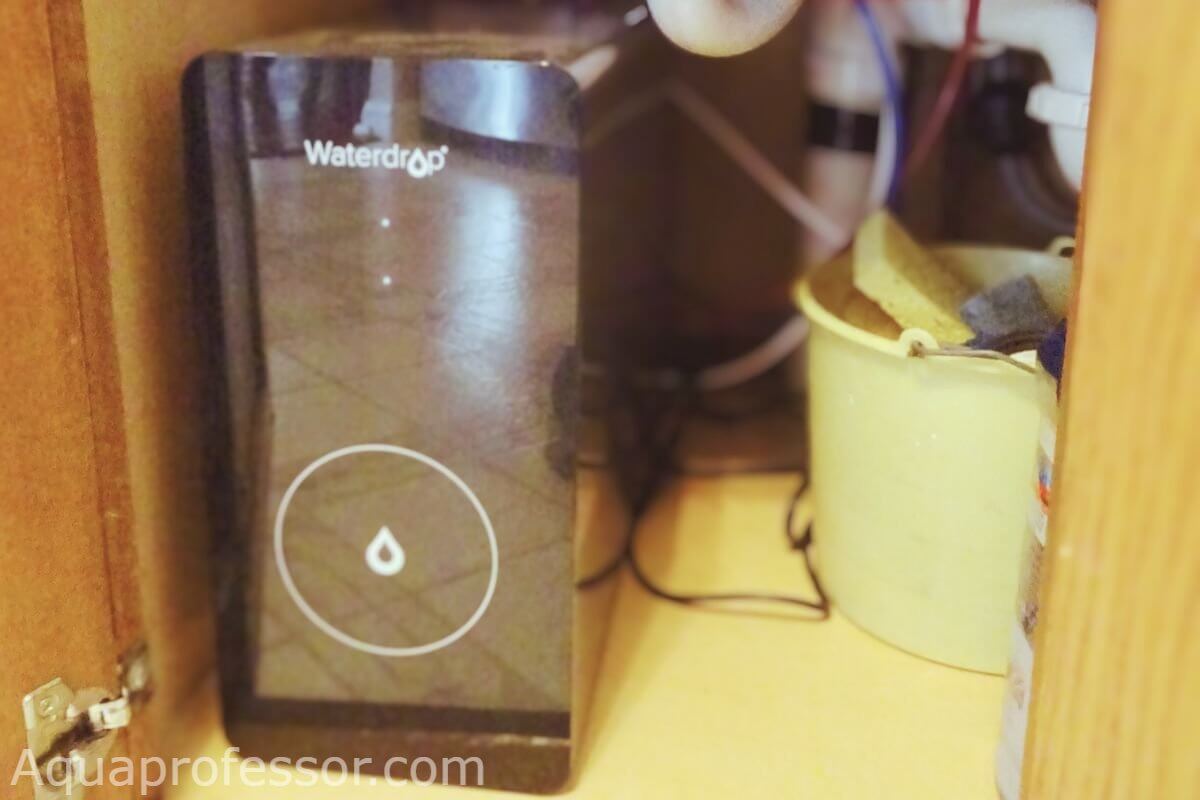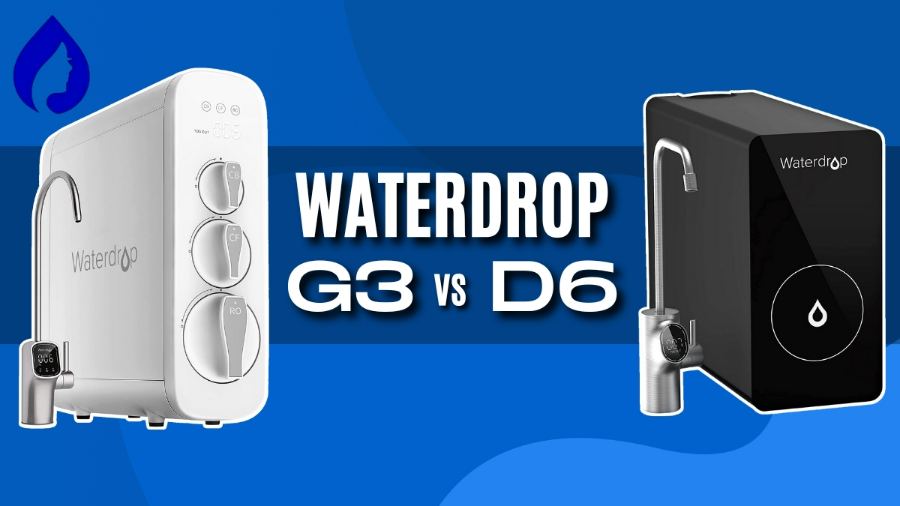
Despite their different features, Waterdrop D6 and G3 under-sink reverse osmosis filters efficiently improve your water quality. The D6 model has a six-in-one composite filter, while G3 utilizes three separate filters.
As the ultimate comparison between Waterdrop D6 and G3 boils down to critical factors like filtration efficiency and high flow rate, we promise to provide the best guide to help you choose the right filter.
Keep reading!
👉Waterdrop D6 Review: Best Tankless RO In 2023?
Pros
- Tankless, compact, and space-saving
- 6-in-1 composite filter technology
- 600 GPD filtration capacity
- Longer filter lifespan
- Smart Faucet with TDS monitoring and filter life indicators
- Less leakage due to integrated water circuit
- NSF- 58, 372 certified
- 30-day money-back guarantee
- Less water wasted (2:1 drain ratio)
Cons
- Tricky installation
- Noise can be disturbing
The WD-D6 Tankless RO system is a new addition to the Waterdrop family with upgraded composite filter technology and less water wastage.
👉Waterdrop G3 Review: Worth The Price?
Pros
- Compact and tankless design.
- 400 GPD filtration capacity
- 8-Stage Deep filtration
- NSF- 58, 372 certified
- 91.9% TDS reduction rate
- Easy installation and maintenance
- Easy 1-twist filter replacement
- Smart designer Faucet
- TDS monitoring and filter life LED indicators on housing
- 0.42 GPM Flow rate
- 30-day money-back guarantee
Cons
- Costly
- High water wastage (1:1 drain ratio)
- Less space-saving
- Leakage issues
Waterdrop G3 is a stylish-looking compact under-sink water filter with eight stages of filtration, a smart display, and a 400 GPD filtration capacity.
Here's How We Test Products At Aquaprofessor
⚖️Waterdrop G3 vs D6: Which is The Best System?
| Under Sink RO: | Filtration Efficiency | Flow Rate | Ease of Use and Maintenance | Certifications | Warranty and Customer Support |
| Waterdrop G3 | The 8-stage filtration system that removes 1000+ water contaminants | 400 GPD filtration capacity with0.28 GPM flow rate | Easy to install, use, and replace filters, but meter settings reset automatically. | NSF 58,372 | 1-year manufacturer warranty and Lifetime customer support |
| Waterdrop D6 | The 6-stage filtration system that removes 1000+ water contaminants | 600 GPD filtration capacity | Tricky installation but easy maintenance. | NSF 58,372 | 1-year manufacturer warranty and Lifetime customer support |
📝Waterdrop G3 vs D6: Detailed Comparision
1️⃣ Filtration Efficiency
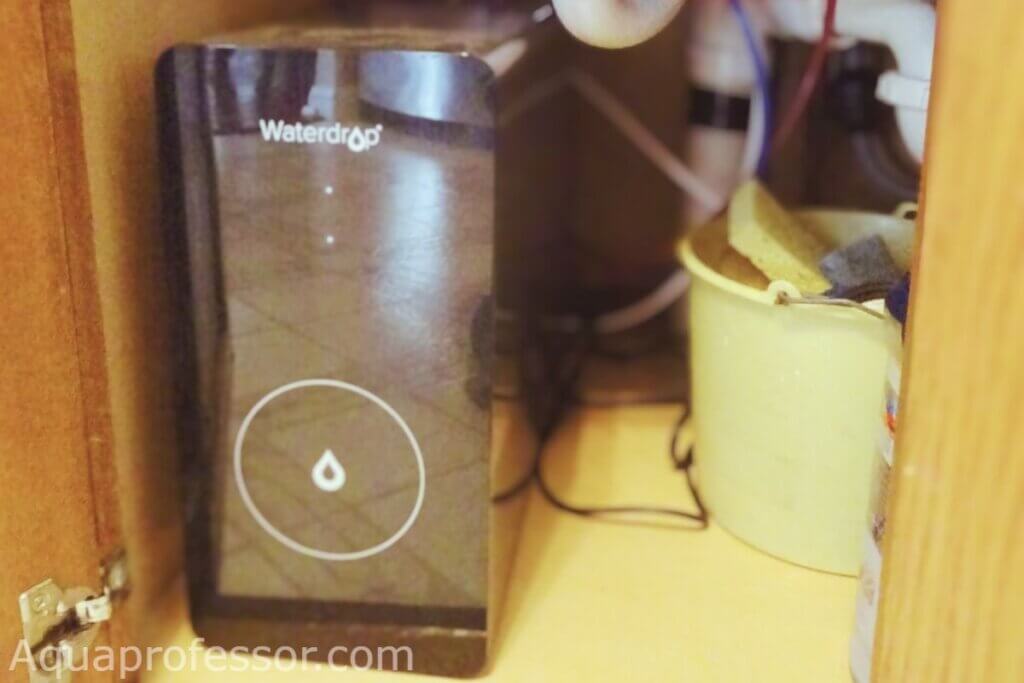
G3 and D6 are efficient water cleaners with a 91.9% TDS (Total Dissolved Solids) reduction rate and can remove 1000+ chemical contaminants from water.
The main feature lies in the multi-stage filtration process of both filters. Waterdrop D6 utilizes a 6-in-one integrated composite filter, while G3 has 8 stages of filtration divided into three filter cartridges.
The six filtration stages included in the D6 composite filter are:
The eight filtration stages of Waterdrop G3 include:
The layers are arranged so that they consecutively remove large to minute particles.
Neither D6 nor G3 comes with a pre-installed remineralization filter. You must purchase and attach an additional remineralization tank to your under-sink unit to enjoy the benefits of restored minerals in purified water.
The winner based on filtration capacity is Waterdrop D6, which provides the same benefits but a more convenient technology.
2️⃣ Flow Rate
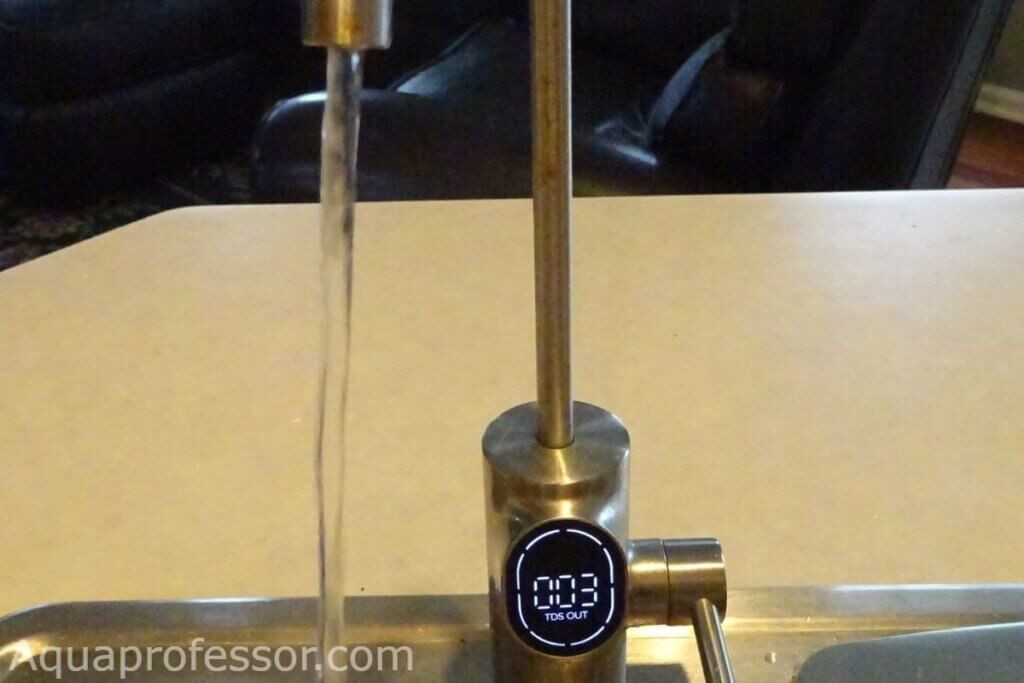
The filtration capacity of Waterdrop G3 is 400 GPD (Gallons Per Day), which is less than the filtration capacity of D6 unit – 600 GPD. We confirmed this on testing and found that the flow rate of D6 was more than that of G3 as it fills the same glass of purified water in less time.
Coming to water wastage, Waterdrop D6 has a 2:1 pure-drain ratio, while for G3, it is 1:1. So, Waterdrop D6 is more eco-friendly as for every gallon of pure water obtained, G3 wastes an equal amount of water, whereas D6 wastes half of it.
The winner of this round is Waterdrop D6 again, as it has a faster filtration process with minimum water wastage.
Also Read: Waterdrop vs Hydroviv Under Sink
3️⃣ Ease of Use and Maintenance
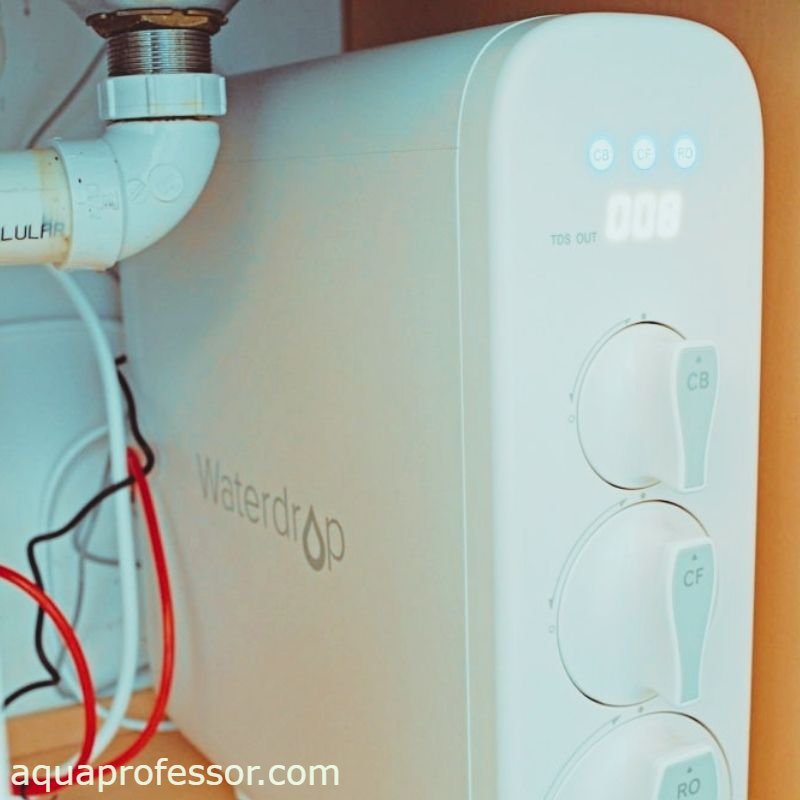
Waterdrop D6 and G3 are easier to install than traditional units as they are tankless and compact. However, among themselves, customers have found the installation of Waterdrop D6 trickier than G3. The issue is usually faced during pipeline connections and facet fittings.
Note:
Regarding maintenance, Waterdrop D6 requires only one replacement filter every year. On the other hand, as Waterdrop G3 has three filters with different lifespans, you must change each cartridge separately and timely. So, the replacement filters cost higher for G3 than for D6.
Moreover, holding a composite filter, D6 has closed integrated water circuits and hence, less chance of leakage. In comparison, Waterdrop G3 has received various complaints of water leakages in its 3-cartridge system. Thus, the overall cost of maintenance increases in G3.
Both reverse osmosis systems have an on-shelf smart kitchen faucet with real-time TDS monitoring and an LED light display to indicate filter lifespan. The smart display is placed on the faucet in D6 and the filter body in G3.
We declare Waterdrop D6 the winner in ease of use and maintenance because of its convenient integrated composite filters and smart features.
Also Read: Waterdrop X Series Reverse Osmosis Review
4️⃣ Certifications
D6 and G3 belong to the same brand – Waterdrop, which is NSF/ANSI certified for 58 and 372 standards for all its Tankless RO systems.
In addition, they have undergone and passed 400+ lab tests that prove their filtration efficiency. They also hold certifications for WQA (Water Quality Association) and IAPMO (International Association of Plumbing & Mechanical Officials).
So, it’s a tie here.
5️⃣ Warranty and Customer Support
All Waterdrop buyers get the same lifetime customer and tech support. As for Waterdrop D6 and G3, you can expect a 30-day satisfaction guarantee and a 1-year repair and manufacturer warranty.
In addition, you can contact them by email or phone for consultation, complaints, and queries. They also offer a live chat facility on their website for all visitors.
Again, it’s a tie.
🏆Difference Between Waterdrop D6 and G3: Who Wins?
The clear winner of this head-on comparison is Waterdrop D6.
Waterdrop D6 reverse osmosis filter offers the same good-quality and great-tasting water at much more convenience. It is a cheaper and eco-friendly option with a 2:1 waste-water ratio.
Its 6-in-1 advanced composite filters with a 0.001-micron pore size are efficient at removing harmful contaminants and easy to maintain.
It has a higher flow rate of 600 GPD to save you time and provide a constant water supply. Its sleek and compact design can fit even small under-sink spaces.
Also Read: Hydroviv Vs Reverse Osmosis System
💡Waterdrop D6 vs G3: FAQs
After reading this article, we hope you can choose the better Waterdrop reverse osmosis system for your home.
However, if you still have some questions about these water purification systems, you must first go through our answers to some frequently asked questions below:
Is Waterdrop a good reverse osmosis system?
Seeing the excellent customer rating Waterdrop has garnered over the years, we can say it is a good reverse osmosis system. Furthermore, these filters are available in different models for different needs and requirements.
However, customers have faced shipment problems, high costs, and non-compatible faucet parts, but their good customer service always comes to the rescue (except for the high price).
How is tankless RO different from traditional RO?
The only difference between tankless and traditional reverse osmosis systems is the design. Traditional RO systems have a storage tank to store filtered water that can be quickly fetched later. The Tankless RO systems lack storage tanks and deliver freshly filtered water using an internal pump when needed. Thus, traditional RO systems are bulky, while tankless ones are space-saving and compact.
When was Waterdrop D6 launched?
The Waterdrop D6 under-sink reverse osmosis system was launched in 2020. Eyeing the success and pain points of previous water filtration models, Waterdrop introduced the D6 RO filter as a massive upgrade to other competing systems in the water filtration industry.
How long do Waterdrop G3 filters last?
There are three replaceable filter candles in the Waterdrop G3 model – CB (Activated Carbon Filter), CF (Pre-sediment and Carbon Block Filter), and RO (Reverse Osmosis Membrane Filter).
The topmost CB filter lasts 12 months or 1100 gallons of water. The middle CF filter can last six months or 550 gallons of water. Lastly, the RO filter at the bottom has a comparatively long filter life of about 24 months or 2200 gallons of water.
Does Waterdrop remineralize?
No. Waterdrop tankless RO water filtration system does not have an in-built remineralization tank/filter. The good news is you can still purchase Waterdrop’s add-on remineralization filter. It attaches between your central RO filtration unit and the faucet. It helps restore essential minerals often lost due to intense filtration into clean drinking water.
Adarsh is a Health & Nutrition Sciences graduate with expertise in environmental health. He is associated with ventures like Glacier Fresh Filter and Simpure Filter Systems. Through Aqua Professor, he intends to provide helpful information to every home to help them make smarter decisions.

